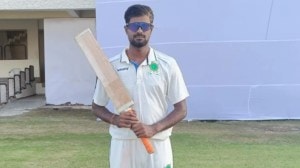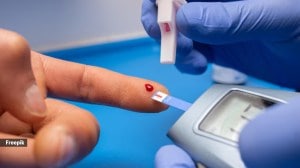Bengaluru executive has heart attack despite playing football every weekend, clearing stress tests and looking fit: What did he ignore?
Cardiologist explains why people in their 30s and 40s collapse during workouts at the gym or during intense physical activity
 An endurance test, or a stress test, can potentially miss a plaque in the heart. (File photo)
An endurance test, or a stress test, can potentially miss a plaque in the heart. (File photo)A few days ago, a Saturday to be precise, a 30-year-old young executive was brought to the emergency room with a heart attack that required immediate intervention. He had collapsed while playing a weekly game of football, a weekend drill he had followed for two years. He was fit, fairly active and had cleared a physical endurance test before every tournament season. So, what caused his heart blockage? A basic blood workup showed that he had been living with mild diabetes for the last two years. Worse, despite a family history, he thought he could control the slightly elevated blood sugar levels on his own without a doctor’s intervention. He was an occasional smoker too.
What does this case tell us? My patient’s blood sugar levels were higher than normal but not drastically so. He thought his fit lifestyle was enough to lower levels. But clearly what he thought was lifestyle intervention did not work well enough to lower sugar levels. Had he consulted a doctor to cross-check his levels, given his family history, the doctor would have probably suggested medication or stricter checks and balances.
The second takeaway is that an endurance test, or a stress test, can potentially miss a plaque in the heart. While stress tests are generally good at detecting big blockages, they may not identify smaller or non-calcified plaques that could still pose a risk. In people living with diabetes, these soft plaques often get easily dislodged with physical exertion.
A GYM WORKOUT IS THE LAST STRAW
So, when we talk about heart attacks in the gym, it’s not the treadmill or weights that are at fault. It’s your body’s metabolic state and whether it can withstand a gym routine or needs something else altogether. Be it insulin resistance, blood sugar control, hormone imbalance, chronic inflammation or slow fat metabolism, these can lead to serious problems under physical stress. People in their 30s and 40s are particularly at risk due to lifestyle choices made in their 20s. Sedentary habits, unhealthy eating, high stress and irregular sleep take a toll. Although their bodies may look healthy, their internal systems, particularly cardiovascular and endocrine systems, are often stressed.
WHY THOSE WITH BLOOD SUGAR, CHOLESTEROL, OBESITY AND HYPERTENSION ARE AT RISK
Any level of blood sugar can damage blood vessels and nerves, leading to heart disease. Combined with the increased workload on the heart during exercise, this can trigger a cardiac episode. People living with obesity or high blood pressure already begin with a baseline disadvantage. Compared to a healthy person with normal weight and other parameters doing workouts, they would report a higher BP even with minimum activity. In such cases, the BP could go up to 170/100 mm Hg (normal BP is 120/80 mm Hg) in no time. I have seen patients come in with 200/100 mm Hg following intense physical activity. We had to keep them in ICU and monitor them to ensure their BP settled to normal levels.
Such high pressure reading leads to an increased blood flow characterised by an elevated heart rate. Monitoring heart rate during exercise is important to ensure workouts are challenging but safe, especially for those with pre-existing conditions.
Pay attention to how your body feels during exercise. If you experience chest pain, severe shortness of breath, dizziness, or nausea, slow down or stop exercising.
SHOULD WE BE GRADING OUR WORKOUTS AND PHYSICAL ACTIVITY?
Yes, and it should be done on the basis of your baseline blood work. At least we would know where to begin. Also maintain a regularity of routine. There are no gains from exercise if you are absolutely sedentary for five days a week and become a weekend warrior with a vengeance. These sudden bursts of activity may stress your heart that’s idling most of the time.
To minimize risk, it’s crucial to warm up with light activity and avoid overexertion. Dehydration can increase the risk of a sudden cardiac arrest as it leads to electrolyte imbalance which interferes with heart rhythms.
(Dr Katheria is interventional cardiologist at Manipal Hospital, Bengaluru)



- 01
- 02
- 03
- 04
- 05




























